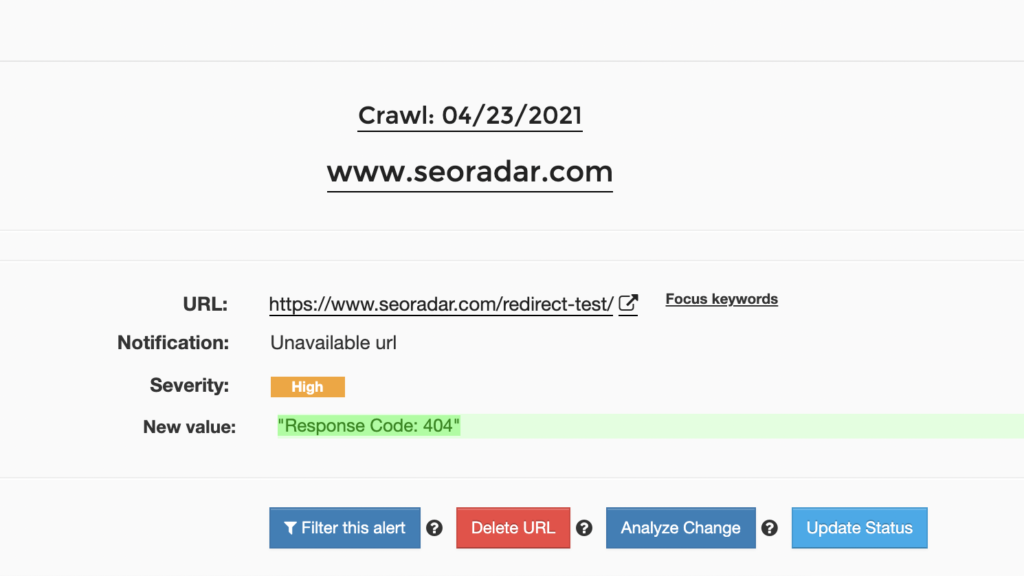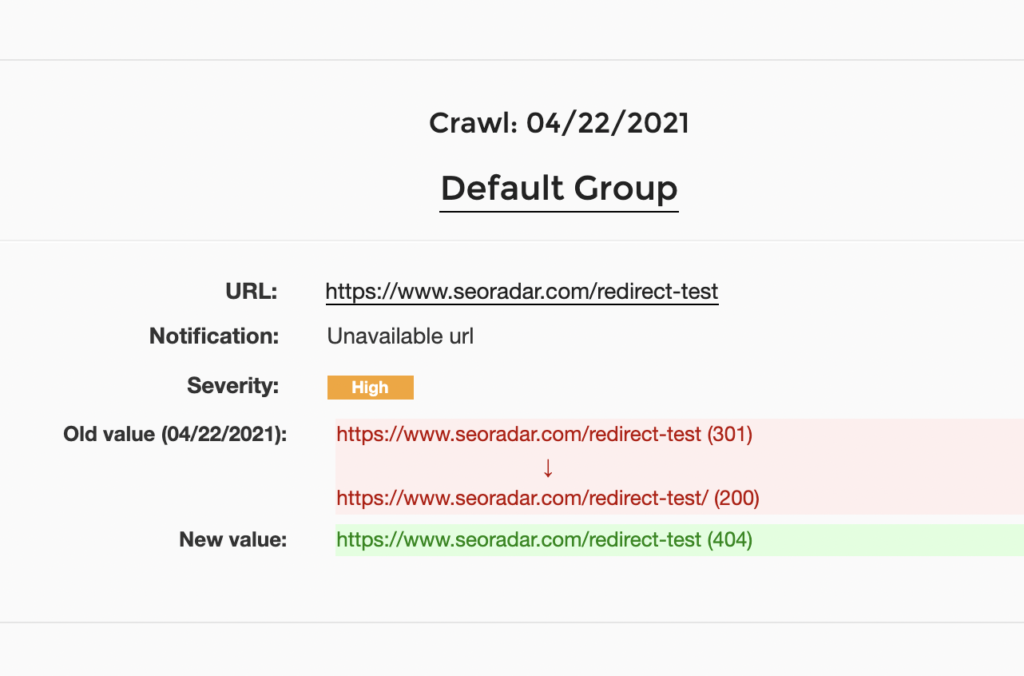What is a broken redirect?
A redirect forwards one URL to another URL. For instance URL www.domain/abc might redirect to www.domain/efg. These redirects are typically put in place if there is a URL structure change, which happens quite often. They also may happen globally for the site if there is a domain change. These would be configured as 301 redirects or 308’s (permanent redirect). As a result, link equity is passed from the old URL to the new URL. So if URL www.domain/abc had 50 links, the value of those links is passed to www.domain/efg (and in general that value propagates to all the pages on the site).
A broken redirect is when old URLs no longer have a permanent redirect in place or they no longer redirect to the desired target. Examples:
- 404 errors (HTTP error)
- 302 temporary redirect
- 500 errors (server errors)
- Unintended change in the target URL (for instance if the redirect changes to the home page or other non-relevant page).
Why it’s important?
When a redirect breaks, the page loses the link equity or value of the links being passed to the old URL. When these appear in multiple places, the broken redirects can weaken the entire website. Bounce rates can increase, and overall it creates a poor user experience if anyone is routed to a page with a broken redirect. These are critical issues and it is important to fix them as quickly as possible.
Broken redirects are one of the most insidious issues that can hit your website. Why? Because broken redirects are often not observable or testable from the current/live website, for example a link from another site to your site from decades ago that still generates some traffic. If these redirects break or go away, you can suddenly lose the link equity, and yet the cause will be largely invisible to you.
Unfortunately, I have personal experience with this issue. I got burned by this early in my career for a high-flying travel startup that lost 30% of our SEO traffic due to lost link equity. We eventually recovered but not until there was severe damage.
How can you monitor redirects?
If you are SEORadar customer, broken redirects are monitored for you. This feature was included specifically so our customers would not experience the pain I did back when we had those broken redirects.
You simply upload or paste URLs you’d like to monitor into the SEORadar redirect tester. The application will check the status of those URLs on a consistent basis. If there is any change in the URL status (change in the redirect chain or if the target URL generates an error), SEORadar will generate an alert.
In this case, the target the old URL has started 404-ing instead of redirecting, stranding the equity of the source URL and suddenly weakening the target URL and in fact the whole site. And since this old URL no longer exists on the site, the source of this problem will be obscured, unless you are using the redirect tester in SEORadar or have hacked up some custom code to monitor the redirects:

Of course, the target URL can start 404-ing as well. Since it is part of the live site, SEORadar will catch that as part of our regular monitoring, but the redirect will specifically generate an alert.

These should be fixed as quickly as possible since once they are seen by search bots, it may take significant effort to build back up. It is generally believed by the SEO community that the longer a URL is 404-ing, the more the equity degrades. I have seen evidence this in the real world.



